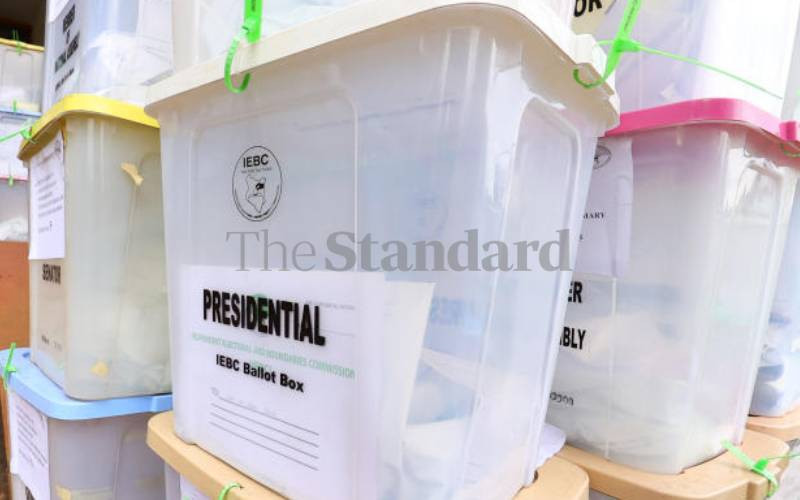
An estimated four in 10 Kenyans don’t have jobs. Entrepreneurship is considered one of the solutions that could fix this, and one of the growing industries in this economy is the taxi business, especially with the launch of taxi-hailing applications.
The apps don’t limit drivers, which means one can sign up on any number of platforms, including Uber, Taxify, Little and Pewin.
But to maximise your earnings, you’ll need a fuel-efficient vehicle with an engine capacity of between 1,000cc and 1500cc; a car that’s easy to maintain and comfortable for the customer. The common options are second-hand, seven-year-old imports of the Toyota Belta, Nissan Tiida or Honda Fit. But what if you could buy a new vehicle at about the same price point?
Renault Kenya has an interesting offer in the Kwid, whose manual version retails at Sh999,999, and the automatic at Sh1,299,000.
The vehicle is 3.7 metres long, 1.6 metres wide and 1.5 metres high. It has an SUV-inspired style, with sharp creases on the hood giving it a muscular look, and bulging fenders giving it an aggressive stance. So here’s what else it has going for it.
Interior
The first impression you get when you enter the Kwid is that it doesn’t feel like an entry-level compact car. It has quality plastics all through the cabin and comes with a multimedia system with satellite navigation, bluetooth and USB connectivity, front power windows, an on-board trip computer, and a gear shift indicator.
Being a rather bulky person, I appreciate the fact that the front seats are pretty comfortable, and at the rear, there’s ample leg space.
The rear seats aren’t sufficiently bolstered, but they’re as comfortable as what you’d get in the Mazda Demio. Its size makes it easy to manoeuvre, and it comes with sufficient boot space. With 300 litres at the back, it’s the biggest of the cars in its range – in fact, its boot space is larger than the Toyota Vitz’s.
Engine
The Kwid comes in a choice of two derivatives: A three-cylinder 795cc unit that delivers 40 kilowatts (kW) and is linked to a five-speed manual gearbox. The automatic version is powered by a 999cc engine that delivers 51kW of power.
These figures may look measly on paper, but with the Kwid’s body weighing close to a Formula One vehicle (at 660 kilogrammes) its power-to-weight-ratio is impressive.
You can expect average fuel economy of 25 kilometres per litre for both models.
The drive
Stay informed. Subscribe to our newsletter
Even at 800cc, the Kwid will blow you away. There’s adequate power delivery through the gears, especially if you short-shift.
Renault has taken into account the treacherous Kenyan road conditions and set up the car rather well. Potholes are tackled with ease and bumps are filtered out well, unless they’re really deep ones. The rear suspension is softly-sprung.
The Kwid has a high ground clearance of 18 centimetres, which is higher than what some grey imports come in with.
There’s minimal body roll if you get a tad enthusiastic on sharp bends and crests, and the power-assisted steering takes away the stress of navigating in tight parking spaces.
Running costs
Let’s consider the total cost of ownership over three years for the Kwid versus the popular Toyota Belta, for instance.
A used Belta, with an engine capacity of 996cc, costs about Sh920,000.
If you service it regularly with genuine parts, you’re looking at spending Sh44,000 every year – including the costs of labour – which comes to Sh132,000 over the three-year period.
And then there are the fuel costs. The Belta has a 42-litre tank. Let’s assume the costs of fuel hover around the current Sh100 for the next three years. This means filling your tank every week would cost you Sh4,200. If you do this for three years, the total costs of fuel come to Sh604,800.
Now, for the Kwid.
Service will cost you Sh50,000 a year for genuine parts and labour, so in three years, you’re looking at spending Sh150,000, which is higher than what the Belta would cost.
However, when it comes to fuel, there are good savings to be made. Filling the 28-litre tank will cost you Sh2,800 a week. In a year, you’d spend Sh403,200.
Without taking into account the costs of insurance and licences, you’re looking at savings of Sh183,600 with the Kwid over the Belta.
The Renault model also comes with a three-year/100,000-kilometre warranty that covers any manufacturing defects, as well as exterior and interior faults.
Safety
The Kwid comes with a driver’s airbag and emergency lock retracting (ELR) three-point safety seatbelts. There’s a scheduled upgrade of the vehicle that will see the introduction of an anti-lock braking system (ABS), otherwise known as the anti-skid braking system, that prevents wheels from locking up.
 The Standard Group Plc is a
multi-media organization with investments in media platforms spanning newspaper
print operations, television, radio broadcasting, digital and online services. The
Standard Group is recognized as a leading multi-media house in Kenya with a key
influence in matters of national and international interest.
The Standard Group Plc is a
multi-media organization with investments in media platforms spanning newspaper
print operations, television, radio broadcasting, digital and online services. The
Standard Group is recognized as a leading multi-media house in Kenya with a key
influence in matters of national and international interest.
 The Standard Group Plc is a
multi-media organization with investments in media platforms spanning newspaper
print operations, television, radio broadcasting, digital and online services. The
Standard Group is recognized as a leading multi-media house in Kenya with a key
influence in matters of national and international interest.
The Standard Group Plc is a
multi-media organization with investments in media platforms spanning newspaper
print operations, television, radio broadcasting, digital and online services. The
Standard Group is recognized as a leading multi-media house in Kenya with a key
influence in matters of national and international interest.





